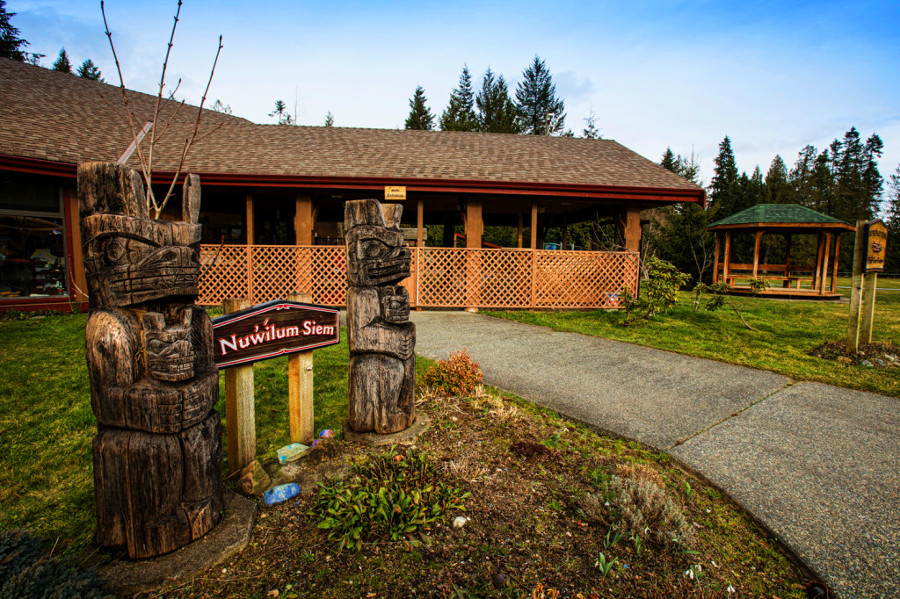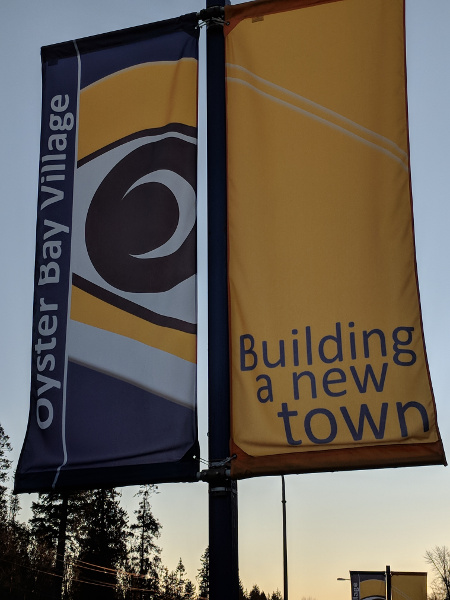Stz’uminus First Nation
Ladysmith’s First People
Ladysmith is located on the Traditional Territory of Stz’uminus First Nation (the original spelling for “Chemainus”). Stz’uminus territory stretches over 1,200 hectares which includes four reserves; Say-la-quas 10, Squaw-hay-one 11, Oyster Bay 12, and Chemainus 13.
Ancestors of Stz’uminus settled around this area’s waterfront thousands of years ago because it was a sheltered area rich in fishing and hunting. The harbour was ideal for the Coast Salish seasonal patterns of habitation and migration. Families travelled the coast and across to the mouth of the Fraser River for fishing and hunting.
Stz’uminus First Nation continue traditions of hunting and fishing and practise land stewardship using complex, generational knowledge on sustainable land management.
In addition to traditional practises many Stz’uminus members adhere to the Shaker faith – an indigenized form of Christianity founded in Washington State in 1882 and established on Vancouver Island in 1910. Stz’uminus First Nation members speak Hul’qumi’num.

Stz’uminus traditions
Fishing and hunting are important Stz’uminus practises grounded in thousands of years of tradition. Stz’uminus used nets, harpoons and trolling to fish. They harvested smoked salmon, herring, ling cod, flounder and halibut. Oil from seals, porpoises and the tiny eulachon was used for food, trade and medicine.
Stz’uminus ancestors lived in permanent villages that included many longhouses which were central to cultural practises and provided shelter for multiple families, especially in winter. Today the Kulleet Bay longhouse is still a vital part of the community and traditional ceremonies are routinely practised there, including naming ceremonies, funerals, and initiations.
The Stzʼuminus are well-known for their war canoes. The vessels can range from 19 to 52 feet long. They are made of cedar and hand carved. Each carries a crew of 11. Today, their tradition of the canoe is kept alive with annual races held at Kulleet Bay. And crews travel from May to August each year to compete in various races along the BC coast all the way South to Washington State.

Economic development
Today the Stz’uminus First Nation have thriving businesses. Their economic development agency, Coast Salish Group, was founded in 2009 to support Stz’uminus’ vision of self-sufficiency through economic development.
At present there are 1300 members of Stz’uminus First Nation with half living on reserve and the other half living in various urban areas.
Stz’uminus First Nation and the Town of Ladysmith work collaboratively on several initiatives that touch many corners of both communities. The two have signed a Memorandum of Understanding which sets out joint initiatives and the means for working together. They have also agreed to include First Nations culture and traditions in future agreements and projects.
